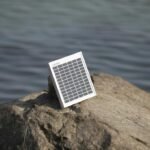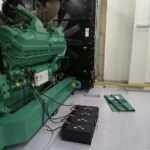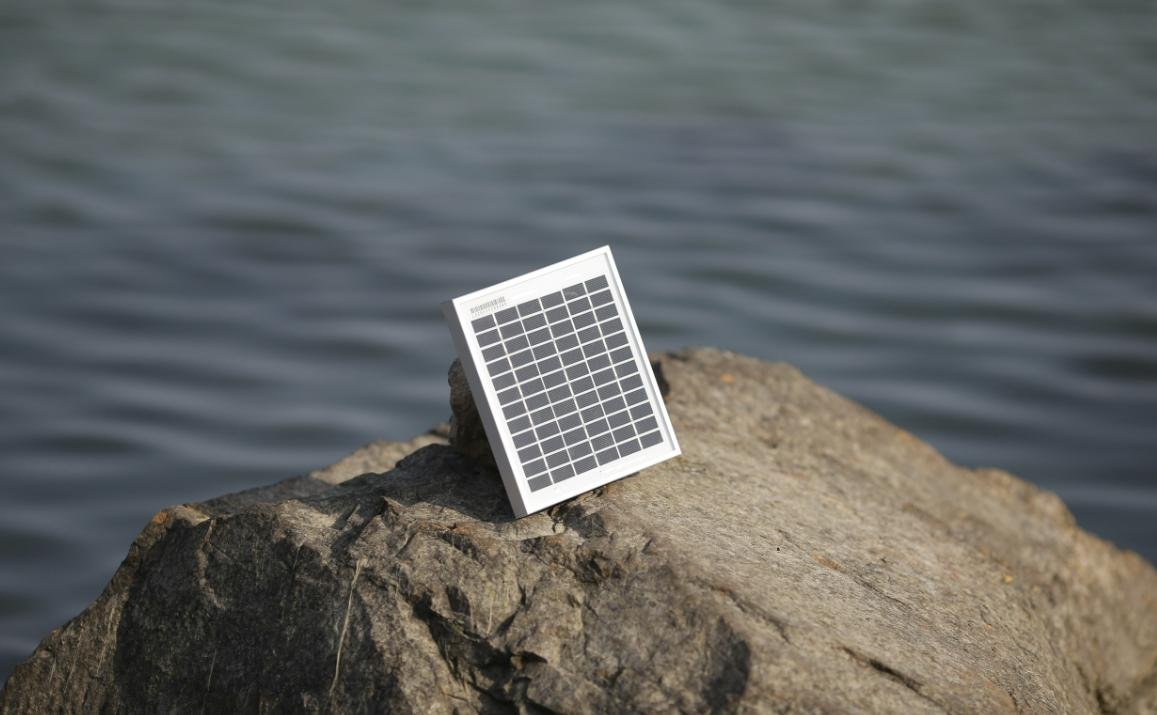Understanding Solar Panels and Their Power Output
Solar panels are devices that convert sunlight into electricity, making them a critical component in renewable energy systems. A typical 120W solar panel produces a maximum output of 120 watts under optimal sunlight conditions. This conversion process relies on photovoltaic (PV) cells, which capture photons from sunlight and release electrons, generating direct current (DC) electricity. The configuration and quality of the solar cells directly affect their efficiency, typically ranging between 15% to 22% for most commercial panels.
One of the primary factors influencing the power output of a 120W solar panel is sunlight availability. Solar panels perform best under clear, sunny conditions. However, environmental variables such as cloud cover, shading from nearby objects, and atmospheric conditions can significantly reduce their efficiency. It is essential to ensure that solar panels are installed in areas where they will receive consistent sun exposure throughout the day.
Another aspect to consider is the orientation and tilt of the solar panel. For maximum energy production, panels should ideally be oriented toward the equator and tilted at an angle that aligns with the geographical location’s latitude. This positioning optimizes the capture of direct sunlight. Additionally, seasonal changes and the sun’s path across the sky can impact the daily power output of the solar panel, making optimal placement essential for harnessing the highest wattage possible.
Moreover, the temperature can also influence power generation. While solar panels operate more efficiently in cooler temperatures, excessive heat can decrease their performance. Therefore, considering all these factors—sunlight availability, panel orientation, and temperature—is crucial for maximizing the output of a 120W solar panel and ensuring effective energy production for various applications.
Calculating Energy Consumption of Common Appliances
Understanding the energy consumption of household appliances is crucial when assessing the capabilities of a 120W solar panel. Energy usage is generally measured in watts, and knowing how many watts each appliance requires allows users to determine how long they can operate these devices using solar power. The first step is to identify the average power requirements of common appliances, which is typically listed on the product label or in the user manual.
For instance, light bulbs can vary significantly in their energy consumption. An LED bulb usually uses around 10W, allowing it to run for about 12 hours on a 120W solar panel, provided sufficient sunlight exposure. In contrast, a standard refrigerator typically consumes approximately 150-200W; thus, it would require more solar power than a 120W panel can provide. Therefore, it would not be feasible to run it solely on this setup.
Other appliances such as televisions, laptops, and small fans also present varying power demands. A typical television may draw around 100W, which means that a 120W solar panel could potentially power it for about one hour. If the television uses a lower power setting, it may last even longer using solar energy. A laptop generally requires about 60-100W, allowing for extended usage from a 120W panel as well.
In addition to knowing the wattage, the average sunlight exposure—in most regions, about 4-6 hours per day—plays a crucial role in determining how much energy you can harness from your solar setup. By utilizing the formula of power (in watts) multiplied by time (in hours), one can effectively estimate the potential operating time for various appliances. Summarizing energy needs and available solar power can optimize the use of a 120W solar panel to suit household necessities efficiently.
What Can a 120W Solar Panel Power? – Appliances Breakdown
When considering the capabilities of a 120W solar panel, it’s essential to understand the various appliances that can be effectively powered. The output of a solar panel is influenced by various factors, including solar exposure, efficiency, and energy consumption of the devices in question. Below is a breakdown of common household and portable appliances that can be powered by a 120W solar panel, along with the estimated run times based on average wattage.
One of the most efficient uses of a 120W solar panel is for LED lights. Typically consuming between 5-10 watts, these lights can run for approximately 12-24 hours depending on the total daily solar energy collected. A 120W panel can easily power multiple LED fixtures, making it suitable for outdoor lighting or off-grid residential settings.
Small fans, which generally operate on 20-50 watts, can also be supported by a 120W solar setup. Depending on the fan’s wattage, it can run for roughly 2-6 hours, providing relief during warm evenings or in places lacking conventional air conditioning.
Portable electronics like smartphones and tablets usually require around 5-10 watts for charging. Therefore, a 120W panel can recharge several devices simultaneously, taking about 2-4 hours for each device based on the power input and efficiency. Similarly, laptops tend to consume 50-100 watts, meaning a 120W solar panel could power a laptop for about 1-2 hours before needing to recharge.
In addition to these devices, other electronics, such as portable refrigerators (generally 40-60 watts), can run as well but will require careful energy management to optimize usage and extend run time throughout the day. Ultimately, a 120W solar panel provides a versatile solution for powering essential devices, supporting both everyday activities and recreational needs.
Combining Multiple Panels for Higher Power Needs
As the demand for energy continues to rise, many individuals and businesses are exploring ways to enhance their solar energy systems. For those using 120W solar panels, combining multiple units can significantly expand power generation capabilities. By creating a solar panel array, users can meet higher power requirements effectively. This approach allows for customization based on specific energy demands.
To construct an efficient solar panel array, understanding the principles of series and parallel wiring is essential. When panels are connected in series, the voltage increases while the current remains constant. This configuration is beneficial for applications needing higher voltage. Conversely, connecting panels in parallel preserves the voltage level while augmenting the current capacity. This setup is ideal for powering devices that require substantial amperage.
Implementing either configuration, or a combination of both, can ensure that the solar energy system remains flexible and scalable. However, the integration of an inverter is crucial in either case. An inverter converts the direct current (DC) generated by the solar panels into alternating current (AC), which is necessary for household appliances and larger power needs. Without a suitable inverter, even a well-designed solar panel array may fall short in functioning effectively.
Additionally, battery storage plays a pivotal role in higher power systems, particularly for those who rely on solar energy when sunlight is not available. Batteries store excess energy produced during peak sunlight hours and allow users to draw from this reserve when needed. Therefore, combining multiple 120W solar panels with the right inverter and battery storage creates a robust system capable of meeting substantial energy demands.
Considerations for Off-Grid Living
Living off the grid appeals to many individuals seeking energy independence and a sustainable lifestyle. Utilizing a 120W solar panel can significantly contribute to this lifestyle, but several considerations must be taken into account to ensure efficiency and effectiveness. The first step in off-grid living is understanding the limitations of a 120W solar panel. This amount of power generation is ideal for small appliances and basic electronic devices but may not suffice for extensive energy needs.
Appliance selection plays a crucial role in maximizing the utility of a 120W solar panel. Prioritizing energy-efficient devices can greatly extend usage capabilities. For example, LED lights, small refrigerators, and low-wattage electronics are suitable choices for off-grid scenarios. It is essential to consider the cumulative energy demands of these appliances. Compiling a detailed inventory of required devices and their wattage make it easier to tailor energy consumption to the available power supply.
Efficient energy usage strategies are also vital in off-grid living with solar energy. Implementing habits such as utilizing appliances during peak sunlight hours can optimize energy acquisition and minimize reliance on stored power. Additionally, investing in energy storage solutions like lithium batteries can bridge the gap during periods of insufficient sunlight, ensuring a consistent power supply. Regularly monitoring energy generation and consumption patterns further aids in adjusting lifestyle choices for a smoother off-grid experience.
Furthermore, environmental factors must be considered, as factors like geographical location and seasonal variations can affect solar power generation. Engaging in thorough research and planning can help mitigate these challenges. By understanding the constraints and tailoring choices to the capabilities of a 120W solar panel, individuals can successfully transition to a sustainable off-grid lifestyle powered by solar energy. With careful planning, achieving energy independence is within reach.
Real-Life Examples of Using 120W Solar Panels
120W solar panels have become a popular choice for various applications, ranging from recreational vehicles (RVs) to tiny homes. These panels offer a perfect balance of efficiency and compact size, making them suitable for those looking to incorporate renewable energy into their lives. Many individuals have shared their experiences with 120W solar panels, showcasing various benefits and challenges faced during their solar journey.
For instance, an RV user named Tom shared how he installed a single 120W solar panel on the roof of his camper. This panel effectively powers his essential devices, including lights, a small refrigerator, and charging stations for gadgets. Tom appreciates the freedom provided by solar energy, enabling him to explore remote destinations without worrying about draining his batteries. However, he also notes that during cloudy days or when parked in shaded areas, the energy output can be significantly reduced, requiring him to manage his power usage carefully.
Similarly, a family of four residing in a tiny home has integrated a couple of 120W solar panels into their energy system. They utilize the solar panels in conjunction with a battery bank to run household appliances such as LED lights, a laptop, and a small television. The family reports a substantial reduction in their electricity bills and a more sustainable lifestyle. Nonetheless, they have encountered challenges, particularly during winter months when daylight is limited. To address this, they have invested in energy-efficient appliances and adopted habits to minimize electricity consumption.
In another case, a remote cabin owner installed a 120W solar panel setup to power outdoor lighting and charging stations for tools. The cabin is situated in a location with limited access to the grid, making solar energy an ideal solution. The owner emphasizes the importance of regular maintenance and monitoring the system to ensure optimal performance, especially during the changing seasons.
Maintaining Your 120W Solar Panel
Proper maintenance of a 120W solar panel is crucial to ensure its efficiency and longevity. Regular cleaning is one of the simplest yet most effective ways to maintain solar panels. Dust, dirt, and debris can accumulate on the surface, obstructing sunlight and reducing energy output. To clean the panels, use a soft cloth or sponge along with lukewarm water. For tougher stains, a mild detergent can be utilized, but be sure to rinse thoroughly to avoid residue. It is advisable to inspect the panels every few months, especially after severe weather events, to ensure they are free from obstructions.
In addition to cleaning, checking the electrical connections is vital for maintaining optimal performance. Over time, connections can become loose or corroded, leading to inefficiencies. Regularly inspect the wiring and connectors for any signs of wear or damage. If any irregularities are seen, professional assistance should be sought to correct the issue, ensuring that functionality is not compromised.
Troubleshooting common problems is part of the maintenance process for a 120W solar panel. If you notice a significant drop in energy production, check for shade cast by nearby trees or structures, as even partial shading can impact output. Other common issues include inverter malfunctions, which may require professional diagnostics. It’s beneficial to keep an eye on system performance indicators and address any discrepancies promptly.
Additionally, the lifespan of solar panels is typically around 25 to 30 years. To extend their longevity, avoid placing heavy objects on the panels and protect them from harsh impacts. Ensuring they remain free of any obstructions and addressing minor issues can go a long way in supporting the efficiency and durability of your 120W solar panels.
Cost-Benefit Analysis of 120W Solar Panels
Investing in a 120W solar panel can represent a significant financial decision for homeowners aiming to embrace renewable energy. The initial cost of purchasing and installing a 120W solar panel varies widely based on factors such as location, panel quality, and installation complexity. On average, homeowners may expect to pay between $200 to $400 for the panel itself, not including installation costs. However, as the market for solar technology continues to grow, many consumers find a substantial reduction in prices over the years, making solar energy more accessible than ever.
One of the most compelling arguments for solar investment is the potential savings on electricity bills. With a 120W solar panel, homeowners can offset a portion of their energy consumption, leading to considerable reductions in monthly utility charges. For instance, a typical 120W panel can generate approximately 144 kWh per year, although this output can vary based on geographic location and seasonal changes. When calculated against average electricity rates, this could save homeowners around $15 to $20 annually, depending on their local energy prices and usage patterns.
Additionally, several incentives and tax credits exist to alleviate financial burdens associated with solar panel installation. Federal tax credits allow homeowners to deduct a significant percentage of the initial installation cost from their taxable income, while various state and local programs may offer rebates or grants for solar panel purchases. Such incentives can improve the overall return on investment, effectively lowering the payback period for solar energy systems.
In considering all factors, including initial investments, potential cost savings, and available incentives, homeowners must evaluate how a 120W solar panel aligns with their specific energy needs. By conducting a comprehensive analysis, one can determine the long-term benefits of transitioning to solar energy, emphasizing its economic viability and ecological advantages.
Future Trends in Solar Technology
The landscape of solar technology is continuously evolving, driven by advancements in research, engineering, and market dynamics. As the world gravitates towards sustainability, the future of solar panels, including 120W models, is expected to witness significant enhancements in efficiency and capabilities. Emerging trends highlight key innovations that will shape solar energy utilization in the coming years.
One major focus is on efficiency gains. Traditional silicon-based solar cells have seen improvements in their conversion rates, with new materials like perovskite solar cells gaining attention. These alternative materials offer the potential for higher efficiency at a reduced cost, making solar technology more accessible. The integration of bifacial solar technology, which captures sunlight from both sides of the panel, is likely to enhance energy generation, allowing 120W solar panels to produce more power even in limited space.
Additionally, advancements in energy storage solutions are poised to revolutionize the solar market. As battery technology improves, especially with lithium-ion and solid-state batteries, the ability to store energy generated by solar panels will become more efficient. This means that users of 120W solar panels can expect not only to harness more power during the day but also to store excess energy for use during low sunlight hours, improving self-sufficiency.
Furthermore, market growth in renewable energy infrastructure is expected to lead to the development of more integrated systems. Solar technology will likely evolve to include smart features that optimize energy consumption according to user patterns and grid signals. Overall, these trends are anticipated to elevate the performance and practicality of 120W solar panels, making them a more viable solution for a wider range of applications as we move forward in the quest for sustainable energy.






